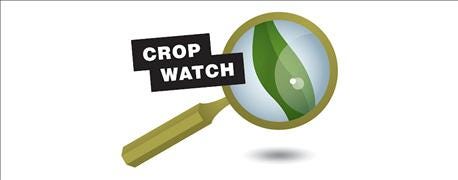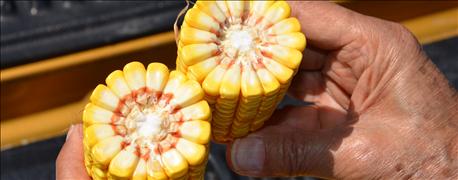
How much will the Crop Watch 2015 field yield? There are two hybrids in the field. Walking the field and pulling ears and doing yield estimates, you can pin a wide range of 170 to 220 bushels per acre. If you guess somewhere in between that range and enter the contest by Sept. 15, you have a good shot of being in the ballpark.
Crop Watch 8/28: Some hybrids flex ear size more than others
The contest asks you to guess the average dry yield per acre to the tenth of a bushel. Send yield entries to [email protected] by 11:59 EDT, Sept. 15. See articles in your state magazine for official rules and more details.

Crop watch 2015: It's difficult to compensate for weight of kernels in yield formulas.
Can you pin it down further? Dave Nanda says yes, but with less accuracy. He is a consult at with Seed Consultants, Inc. Nanda checked the field and is visualizing 190 to 210 bushels per acre. However, he has not walked the entire field.
'Even where we checked, the problem is accounting for how the hybrids will finish on grain fill, and how to account for weight of kernels between the two hybrids," he says.
Both hybrids are showing damage from gray leaf spot, even though the field was sprayed with a fungicide before the brown silk stage. The spread of the disease seems to have stabilized above the ear leaf, but there are lesions all the way to the top of most plants in both hybrids.
One hybrid is rated slightly earlier in maturity. It's showing up, since the milk line when checked recently was halfway down the kernel in that hybrid, and just starting to move down the kernel in the second hybrid.
Crop Watch 8/24: Foliar disease phased, but not stopped, by fungicide

Kernel depth matters: Look at the ear on the right vs. the ear on the left. The ear on the right is from a hybrid that features a smaller cob and deeper kernels.
There appeared to be differences in kernel depth when the ears were split in half and compared. One hybrid had a thicker cob and slightly shallower kernels. The other had a cob smaller in diameter, with kernels making it the same size on the outside as the other ear.
Kernel depth is certainly a factor to take into account when making yield estimates, Nanda says.
About the Author(s)
You May Also Like




